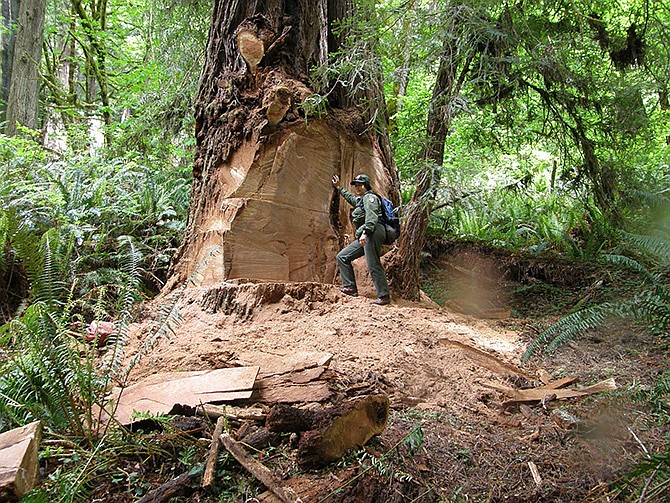Authorities say unemployment and drug addiction have spurred an increase in the destructive practice of cutting off the knobby growths at the base of ancient redwood trees to make decorative pieces like lacey-grained coffee tables and wall clocks.
The practice - known as burl poaching - has become so prevalent along the Northern California coast that Redwood National and State Parks has started closing the popular Newton B. Drury Scenic Parkway at night in a desperate attempt to deter thieves.
Law enforcement Ranger Laura Denny said poachers have been stalking the remote reaches of the park with their chainsaws and ATVs for decades, but lately the size and frequency of thefts have been on the rise.
"When I interview suspects, that is the (reason) they say: their addiction to drugs and they can't find jobs," she said.
Her husband, park district interpretation supervisor Jeff Denny, said it is comparable to poor people poaching rare rhinos in Africa to sell their horns. Jobs are hard to come by since the timber and commercial fishing industries went into decline.
"Originally there were 2 million acres of old growth forest that spanned the coast of Northern California from Oregon to Monterey," he said. "Over the past 150 years, 95 percent of that original forest has been cut. The only remaining old growth forest in existence now is almost entirely within the Redwood national park" and some state parks.
A redwood tree can survive the practice, but the legacy of the organism that could be 1,000 years old is threatened, because the burl is where it sprouts a clone before dying. Sprouting from burls is the prevalent method of redwood propagation, and the source of the Latin name for coast redwood, Sequoia semper vierens, or forever living, he added.
Lorin Sandberg is a burl dealer in Scio, Ore. He occasionally goes to Northern California to buy burl, but it is tough to find any more, with almost all of the old growth that makes the best burls is protected on public land. The good stuff with a lacey grain full of eyes will go for $2 to $3 a pound, unseasoned.
Finished dining room tables are being offered for $1,300 on eBay.
"I don't buy them unless they have proof of where they got it," he said. "I've got to have a paper trail. If there's not a paper trail, it can stay in their yard."

